#Traditional Syrian Dishes
Explore tagged Tumblr posts
Text
The Rich and Delicious World of Syrian Cuisine: Exploring Kebab, Kebbeh, Kabsa, Yalanji, and Shawarma #BlogchatterFoodFest @blogchatter
The Rich Tapestry of Syrian Cuisine Syrian cuisine stands as a testament to the rich cultural heritage and diverse influences that have shaped the country over millennia. Nestled at the crossroads of the Middle East, Syria has absorbed and adapted culinary traditions from its neighbors, creating a cuisine that is both unique and universally appealing. From the aromatic spices to the varied…

View On WordPress
#Authentic Syrian Recipes#Kabsa Rice Dish#Kebab Recipes#Kebbeh Varieties#Middle Eastern Food#Shawarma Street Food#Syrian Cuisine#Syrian Food Culture#Traditional Syrian Dishes#Yalanji Stuffed Grape Leaves
0 notes
Text
I/P food "appropriation" discourse is literally the dumbest shit imaginable, I'm sorry, I'm not entertaining it. People eat what is available to them in the areas in which they live, and will also take their food and traditions with them when you force them out of their homes.
As a result, MENA Jews took the food they have always eaten to the other Middle Eastern country they fled to and continued to make it there and do not owe anyone any explanation or deference for it - not to mention the Jews who have always lived in the region of Israel and Palestine.
If "Israeli food" makes you froth at the mouth but the same dishes on an Egyptian, Syrian, or Lebanese menu do not, then idk, maybe the problem is you.
131 notes
·
View notes
Text
When celebrating the New Year, Middle Eastern Jews have more than a meal: They have a seder. As with the Passover meal, the Rosh Hashanah seder features symbolic foods before the festive meal, a custom that goes back about 1,800 years to when the Jewish sages of Babylon, present day Iraq, were writing the Talmud.
Alicia Assa, the author of the cookbook “Sabores de Mexico”, comes from a Syrian Jewish family that made its way to Mexico at the start of the 20th century. Her family had been in Syria since their expulsion from Spain in 1492, and they brought their customs and foods with them. Still today, Alicia’s family makes a Rosh Hashanah seder of carefully cooked symbolic foods, just as her grandparents and their grandparents made theirs.
At Alicia’s Rosh Hashanah table, you will find stuffed vegetables like cabbage, zucchini, or grape leaves known as “menchshe.” The sauce is sweetened with apricots, prunes and tamarind. And for the rest of the meal, the symbolic foods are incorporated in the dishes. Iranian rice is mixed with orange peel and pomegranate. String beans with tomato sauce and garlic are served at the start of the meal and in the meal itself. Swiss chard, beets, dates — symbolic foods all — are served in a variety of ways.
But be warned. Before you get to the sweet stuffed vegetables, expect to see a fish head. And to bless it.
You can read more about the diverse, symbolic and delicious Syrian Rosh Hashanah traditions here.
Notes:
You can keep the raw, stuffed zucchini in the freezer until you are ready to cook them (see Step Two).
Tamarind sauce is available in speciality stores.
6 notes
·
View notes
Text
Discovering the world
Lebanon 🇱🇧
Basic facts
Official name: الجمهورية اللبنانية (al-Jumhūrīyah al-Lubnānīyah) (Republic of Lebanon)
Capital city: Beirut
Population: 5.3 million (2023)
Demonym: Lebanese
Type of government: unitary parliamentary republic
Head of state: vacant (President)
Head of government: Najib Mikati (Prime Minister)
Gross domestic product (purchasing power parity): $78.23 billion (2022)
Gini coefficient of wealth inequality: 31.8% (medium) (2011)
Human Development Index: 0.723 (high) (2022)
Currency: pound (LBP)
Fun fact: It hosts the highest number of refugees per capita and per square kilometer.
Etymology
The country’s name comes from Mount Lebanon, whose name derives from the Phoenician root lbn, meaning “white”.
Geography
Lebanon is located in West Asia and borders Syria to the north and east, Israel to the south, and the Mediterranean Sea to the west.

There are two main climates: Mediterranean-influenced humid continental in the center and east and hot-summer Mediterranean in the rest. Temperatures range from 11 °C (51.8 °F) in winter to 30 °C (86 °F) in summer. The average annual temperature is 20.9 °C (69.6 °F).

The country is divided into nine governorates (muḥāfaẓāt), which are further divided into twenty-five districts (aqdyah). The largest cities in Lebanon are Beirut, Tripoli, Jounieh, Zahlé, and Sidon.
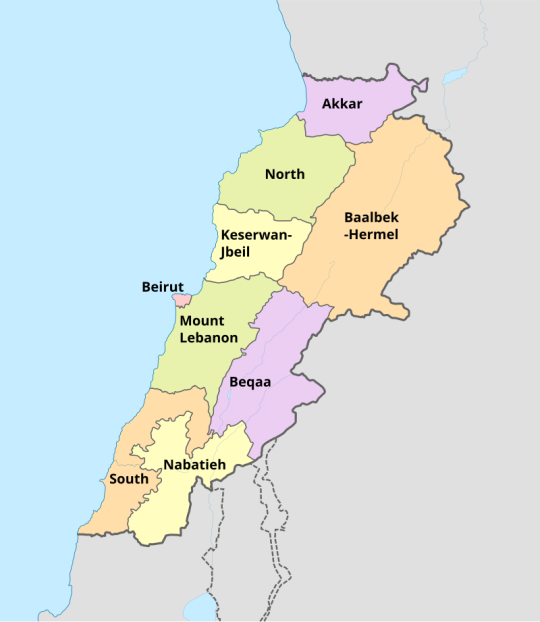
History
2500-64 BCE: Phoenicia
1650-1180 BCE: Hittite Empire
1550-1069 BCE: New Kingdom of Egypt
550-332 BCE: Achaemenid Empire
332-64 BCE: Seleucid Empire
64 BCE-394 CE: Roman Empire
394-635: Byzantine Empire
619-629 CE: Sasanian Empire
636-661: Rashidun Caliphate
661-750: Umayyad Caliphate
750-1517: Abbasid Caliphate
1099-1291: Kingdom of Jerusalem
1102-1289: County of Tripoli
1250-1516: Mamluk Sultanate
1516-1842: Emirate of Mount Lebanon
1516-1918: Ottoman Empire
1843-1861: Double Qaim-Maqamate of Mount Lebanon
1860: civil conflict in Mount Lebanon and Damascus
1915-1918: Great Famine of Mount Lebanon
1920-1926: State of Greater Lebanon
1923-1946: Mandate for Syria and the Lebanon
1926-1943: Lebanese Republic
1943-present: Republic of Lebanon
1948: Arab-Israeli War
1975-1990: Lebanese Civil War
1976-2005: Syrian occupation
1985-2000: South Lebanon conflict
2005: Cedar Revolution
2006: Lebanon War
2006-2008: protests
2007: Lebanon conflict
2011: Intifada of Dignity
2019: 17 October Revolution
2020: Beirut explosion
2021: Beirut clashes
Economy
Lebanon mainly imports from the European Union, Türkiye, and China and exports to the European Union, the United Arab Emirates, and Switzerland. Its top exports are diamonds, polyacetals, and gold.
It has natural gas, limestone, oil, and salt reserves. Services represent 83% of the GDP, followed by industry (13.1%) and agriculture (3.9%).
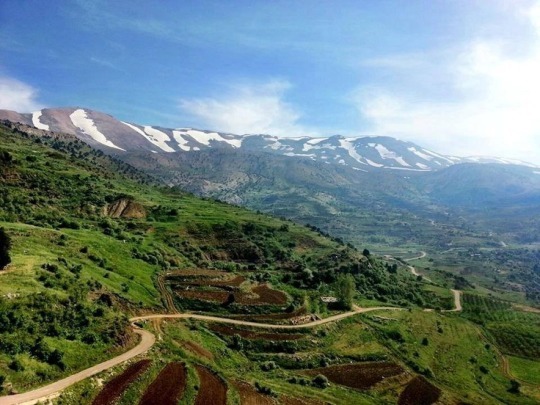
Lebanon is a member of the Arab League, la Francophonie, and the Organization of Islamic Cooperation.
Demographics
95% of the population is Arab, while Armenians make up 4%. The main religion is Islam, practiced by 55% of the population, 27.6% of which is Sunni.
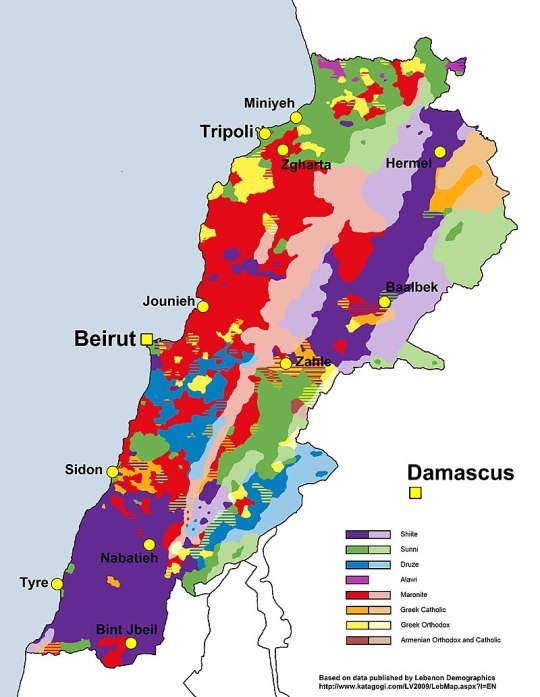
It has a negative net migration rate and a fertility rate of 1.7 children per woman. 89% of the population lives in urban areas. Life expectancy is 78.3 years and the median age is 31.3 years. The literacy rate is 96.7%.
Languages
The official language of the country is Arabic. French is spoken by 40% of the population.

Culture
Lebanese culture has Persian, Greek, Roman, Arab, Ottoman, and French influences. Lebanese people are very gregarious.
Men traditionally wear a shirt, a dark vest, baggy pants (sherwal), a belt, and a headdress. Women wear a shiny dress (gambaz), a wide belt, and a conical hat with a long piece of silk (tantur).
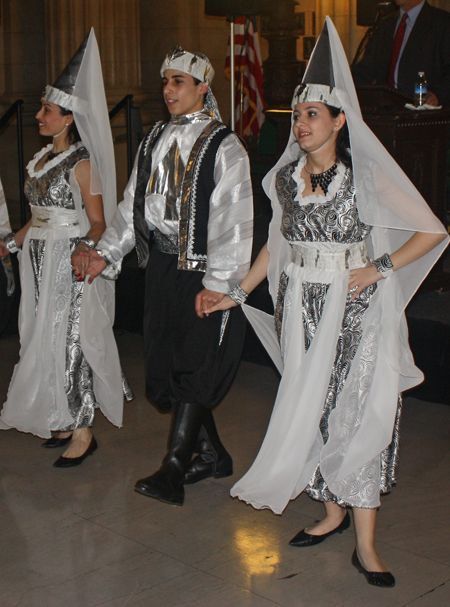
Architecture
Traditional houses in Lebanon are made of stone and wood and have flat roofs and terraces.
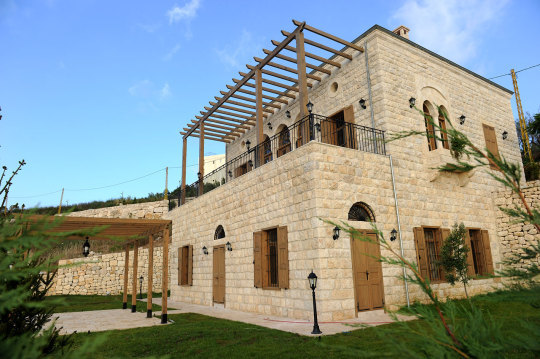
Cuisine
The Lebanese diet is based on fish, meat, pulses, and vegetables. Typical dishes include bamieh bi-zeit (okra and tomato stew), kibbeh (fried balls made of spiced meat and bulgur), sayadieh (seasoned fish and rice), sfouf (an almond-semolina cake), and tabbouleh (a salad of bulgur, onion, tomatoes, and parsley).
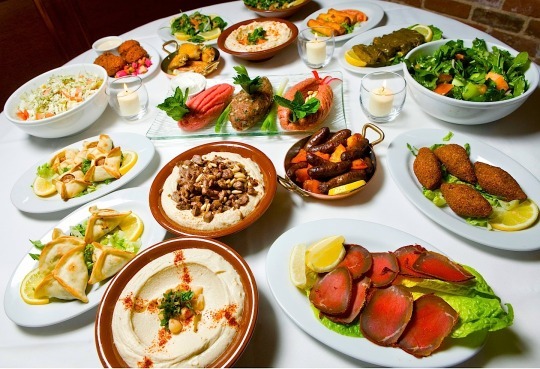
Holidays and festivals
Like other Christian and Muslim countries, Lebanon celebrates Epiphany, Armenian Christmas, St. Maroun Day, Feast of the Annunciation Day, Good Friday, Easter Sunday, Assumption, Christmas Day, Islamic New Year, Ashura, Mawlid, Eid al-Fitr, and Eid al-Adha. It also commemorates New Year’s Day and Labor Day.
Specific Lebanese holidays include Rafic Hariri Memorial Day on February 14, Liberation and Resistance Day on May 25, and Lebanese Independence Day on November 22.
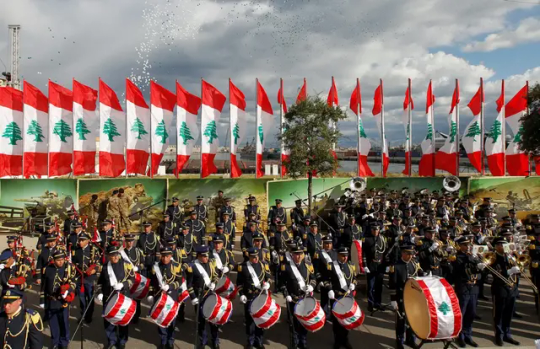
Independence Day
Other celebrations include the Aerial and Circus Arts Festival, the Baalbeck International Festival, which features dance and music performances, and the Beiteddine Art Festival.

Baalbeck International Festival
Landmarks
There are six UNESCO World Heritage Sites: Anjar, Baalbek, Byblos, Ouadi Qadish (the Holy Valley) and the Forest of the Cedars of God (Horsh Arz el-Rab), Rachid Karami International Fair-Tripoli, and Tyre.
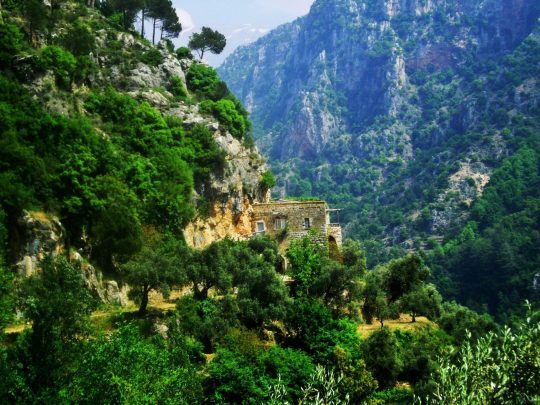
Ouadi Qadish and the Forest of the Cedars of God
Other landmarks include Jabal Moussa, the Mohammad Al-Amin Mosque, the Moussa Castle, Our Lady of Lebanon, and the Tripoli Citadel.
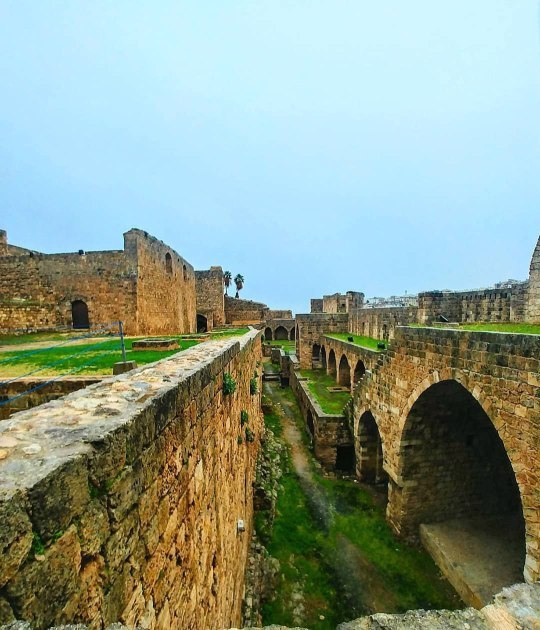
Tripoli Citadel
Famous people
Amin Maalouf - writer
Elie Saab - fashion designer
Fares Fares - actor
Jackie Chamoun - skier
Khalil Beschir - racing driver
May Ziade - poet and writer
Nadine Labaki - actress
Najwa Karam - singer
Ragheb Alama - singer
Rima Fakih - model

Rima Fakih
You can find out more about life in Lebanon in this post and this video.
7 notes
·
View notes
Text

——————
It *is* a 3000-year-old embroidery art, but it being 3000 years old and Jews having lived in that land 3000 years ago (and some Jews living there continuously over 3000 years) does not mean the embroidery art isn’t a part of the Palestinian people’s cultural inheritance. Also, something originating in an areas where Jews live/lived does not inherently make it Jewish. Location is not the sole determiner of whether a group “owns” a practice, otherwise I could claim the practices of Irish Travelers because they originated in the same location as where my ancestors were born and lived under Irish governance.
Additionally, something can be practiced by more than one group of people. Ancient Jews practicing a form of needlework does not negate the fact it is a part of Palestinian culture. It’s not an either-or situation. Something having Jewish practitioners does not mean it can’t be culturally significant to another ethnic/national group. People in a region can and will have shared practices. This would be like saying hummus is *exclusively* Jewish simply because some Jews eat hummus (as opposed to saying that hummus is a common dish in the SWANA region and is a staple of many SWANA Jewish households).
Also, most Palestinians share a strong genetic link to the ancient Canaanites. So, Palestinians *have* been living in Palestine for 3000+ years and *are* among the modern descendants of the ancient people who lived there. Them being Arab or having a diverse history does not mean they have no claim to self-determination in the region. And while Palestinians do have genetic links to ancient Canaanites as well as the ancient Samaritans, slaves from ancient sub-Saharan Africa, *and* the Arab tribes from the Arabian Peninsula, the Palestinian people’s Arab identity primarily comes from a linguistic & cultural connection.
(I’d hate to see what the OP would have to say about Jews from the SWANA region— what do you think they spoke, what cultural practices do you think they enjoyed, and what traditions do you think they observed before being expelled from Yemen, Syria, or Egypt? You think they were eating German Carp and primarily speaking Dutch? Have you considered that they know and have spoken Arabic and danced Dabke? Like… maybe, maybe an Arab linguistic and cultural connection doesn’t invalidate a people’s sovereignty, national identity, or right to safety and self-determination? Or are you also going to argue that mizrachim Jews are Arab invaders and conquerors because they share linguistic and cultural and genetic connections to non-Jewish Syrians and Yemenis and, once long ago, those tribes from that Peninsula?)
The Levant has been occupied by several empires over the millennia and has undergone a lot of political, cultural, and demographic change, whether from wars, immigration, or occupation. So, the region has experienced great change and a lot of diversity throughout the ages. The people who have lived in this region have thus formed their own unique national, ethnic, and cultural identity. Diversity in the region or among a people does not negate someone’s history in a region or their identity as a people. Nor does it negate the fact that they will have their own unique or specific cultural practices. Jewish people, for example, are still a people with their own unique cultural traditions despite having great diversity.
Palestinian families have been living under various different occupations for thousands of years, including Roman, Byzantine, Ottoman, English, and Israeli. Living under occupation does not negate that Palestinian people exist and have a long history in Palestine. Living under occupation for millennia also does not invalidate a people’s cultural inheritance, their connection to a land, their national identity, or the uniqueness of their cultural and national identity. Jewish people, fore example, still have their own unique cultural and ethnic identity, connection as a people, local and cultural traditions, and a spiritual connection to the Levant despite also experiencing several millennia of ethnic cleansing, genocide, forced displacement, and occupation.
Tatreez is a form of traditional Palestinian embroidery recognized by UNESCO as an important intangible cultural heritage. Tatreez is the romanized version of an Arabic word, تَطْرِيز, meaning embroidery or needlework, so it is quite literally not Hebrew, linguistically. Written accounts of tatreez date back as far as the 1700s, long before English and Israeli occupation, and long *after* they were first occupied by an Arabic-speaking group in the 7th century. Each village in occupied Palestine had/have their own tatreez patterns, with unique designs telling stories about the local people. It has been used as a means of preserving Palestinian culture and history, offering a people who have also been victim of ethnic cleansing and genocide over several millennia solace and connection. They are stitching their national and ethnic identity. Tatreez has become an important symbol of resistance, women’s economic autonomy, and the diaspora’s connection to their ancestral homeland from which they and their family were displaced. Due to ongoing ethnic cleansing, genocide, and occupation, tatreez is endangered.
Read more about tatreez below:
4 notes
·
View notes
Note
What’s you’re favourite food
Omg i have quite a few :'D
Well, of the top of my head. Cookies, chocolate or anything with chocolate. pasta, pizza, Syrian chicken shawarma wrap, grape leaves stuffing, om Ali, and some traditional dishes idk their names in English, donuts, grapes, sweat and sour chicken 😅
That reminded me I should have gotten dinner lol :')
4 notes
·
View notes
Text
D I R E C T O R Y (pt. 9)
Cuisine Styles M-Z (Regional Cuisine Names are Italicized) ~
the strikethrough denotes cuisines which are have not yet been shared. in general, i will be sharing more traditional cuisine dishes as time passes. some of the tags are sparse at the moment.
Micronesian • Middle Eastern • Moldovan • Mongolian • Moroccan • Native American • Nauruan • Nepali • Nigerian • Nordic • Norwegian • Omani • Panamanian • Papau New Guinean • Pakistani • Persian • Peruvian • Polish • Polynesian • Portuguese • Puerto Rican • Romanian • Russian • Rwandan • Salvadorian • Samoan • Saudi Arabian • Scottish • Senegalese • Serbian • Singaporean • Slovak • Slovenian • Sierra Leonean • Solomon Islands • Somali • South African • Southern (USA) • Southern African • Spanish • Sri Lankan • St. Lucian • Sudanese • Surinamese • Swedish • Swiss • Syrian • Tahitian • Tanzanian • Taiwanese • Thai • Tibetan • Togolese • Tongan • Trinidadian • Turkish • Tuvalu • Ukrainian • Vanuatu • Venezuelan • Vietnamese • Welsh • West African • West Asian • Zimbabwean
8 notes
·
View notes
Text
mhm,m,. rant under the cut
im sorta tired of trying to reseach anything about syrian culture. yk. my culture. and always getting "heres 10 things about lebanon-" "palestinian traditional clothing!" like thats cool and all but its not. what i asked for. "traditional levantine dishes" I looked for Syrian. cuisine. not levantine. yeah our culture is mainly shared but these things have origin in a certain place . or 'traditional arab xyz' IM NOT LOOKING FOR GENERICALLY ARAB STUFF. OR LEVANTINE. SYRIAN. whys it so hard to find anything about my country do we. just not have a culture or something did we not make anything ? or was everything like. made by palestine lebanon and jordan and we like kinda chimed in or what i just want to have some kinda definitive answer
2 notes
·
View notes
Photo

Khubz, alternatively transliterated as khoubz, khobez, khubz, or khubooz, is the usual word for "bread" in Standard Arabic and in many of the vernaculars.
Among the breads popular in Middle Eastern countries are "pocket" pita bread in the Levant and Egypt, and the flat tannur bread in Iraq.
The oldest known kind of bread, by archaeologists in Northern Jordan, dates back 14,000 years. It was a sort of unleavened flatbread made with several types of wild cereals.
Tannur bread. In Iraq, the most popular bread is the Tannur bread (ḵubz al-tannūr, خبز التنور) which resembles other slightly leavened flatbreads such as Iranian nan-e barbari, Central and South Asian flatbreads (such as naan), and pizza base.
The word tannur comes from the Akkadian word tinūru, which consists of the parts tin 'mud' and nuro/nura 'fire' and is mentioned as early as in the Akkadian Epic of Gilgamesh.
Six recipes for bread baked in a tannur are included in Ibn Sayyar al-Warraq's 10th century Kitab al-Tabikh cookery book.
As a result of the economic sanctions imposed on Iraq in the 1990s there was an increase in the making of bread in the traditional way in a tannur.
Pita bread. Pita is a flatbread found in many Mediterranean, Balkan, and Middle Eastern cuisines. In Arab countries, pita bread is produced as a round flatbread, 18 cm (7 in) to 30 cm (12 in) in diameter. It is thin and puffs up as it bakes. Since it does not contain any added fat, it dries out rapidly and is best consumed while still warm; later, it may become chewy.
The "pocket" pita originated in the Middle East. It is also known as Arab(ic) bread, Lebanese bread, or Syrian bread.
In Egyptian, Israeli, Palestinian, Jordanian, Lebanese, and Syrian cuisine, almost every savory dish can be eaten in or on pita bread. It is one of the staple food items in the Lebanese cuisine. Common fillings include falafel, lamb or chicken shawarma, kebab, omelettes such as shakshouka (eggs and tomatoes), hummus, and other mezes.
Nationals of other countries, for example, South Asians, also consume it as a replacement for roti with curries, cooked vegetables or meat (dry or gravy).
3 notes
·
View notes
Text

FOUL MDAMMAS: Very Healthy and Delicious Traditional Syrian Breakfast Dish,,Main Ingredients" Dried Soy Beans "Edamame"",,,Dried Chickpeas,,Olive Oil,,Lemon Juice,,Garlic,,Onion,,Tomatoes,,Parsley,,Ground Cumin, ,,Ground Flax seed ..Prepared by My Two Daughters"Sawsan & Solafa ..Feb,2023
https://Tumblr.com/Najjarc40
2 notes
·
View notes
Text
"And he said, 'Woe to you lawyers also! For you load people with burdens hard to bear, and you yourselves do not touch the burdens with one of your fingers."
Woes to the Pharisees and Lawyers
He reproves the Pharisees.
It is written, While Jesus was speaking, a Pharisee asked him to dine with him, so he went in and reclined at table. The Pharisee was astonished to see that he did not first wash before dinner. And the Lord said to him, “Now you Pharisees cleanse the outside of the cup and of the dish, but inside you are full of greed and wickedness. You fools! Did not he who made the outside make the inside also? But give as alms those things that are within, and behold, everything is clean for you.
It is written, “But woe to you Pharisees! For you tithe mint and rue and every herb, and neglect justice and the love of God. These you ought to have done, without neglecting the others. Woe to you Pharisees! For you love the best seat in the synagogues and greetings in the marketplaces. Woe to you! For you are like unmarked graves, and people walk over them without knowing it.”
It is written, One of the lawyers answered him, “Teacher, in saying these things you insult us also.” And he said, “Woe to you lawyers also! For you load people with burdens hard to bear, and you yourselves do not touch the burdens with one of your fingers. Woe to you! For you build the tombs of the prophets whom your fathers killed. So you are witnesses and you consent to the deeds of your fathers, for they killed them, and you build their tombs. Therefore also the Wisdom of God said, ‘I will send them prophets and apostles, some of whom they will kill and persecute,’ so that the blood of all the prophets, shed from the foundation of the world, may be charged against this generation, from the blood of Abel to the blood of Zechariah, who perished between the altar and the sanctuary. Yes, I tell you, it will be required of this generation. Woe to you lawyers! For you have taken away the key of knowledge. You did not enter yourselves, and you hindered those who were entering.”
It is written, As he went away from there, the scribes and the Pharisees began to press him hard and to provoke him to speak about many things, lying in wait for him, to catch him in something he might say.
ISRAEL
While Luke’s name never appears in this gospel, ancient Christian tradition unanimously ascribes the book to him. One ancient prologue written to introduce the gospel describes Luke as a Syrian from Antioch. With this piece of information, we can deduce that Luke was probably not Jewish. Paul also listed him with other Gentiles in his greetings to the Colossians (4:14). The ancient prologue goes on to state that Luke eventually settled in the Greek city of Thebes, where he died at age 84.
Luke’s own introduction to his gospel indicates that Luke composed the letter with the purpose of providing a careful rendering of the events of Christ’s life in chronological order. As a physician, Luke would have been trained as a careful observer, a quality that would have been invaluable in this project. The result was the first part of a two-volume work written to Theophilus. We know the subsequent volume as Acts.
Much of the dating of the book of Luke depends on the dating of Acts. Luke’s second volume cuts off with Paul imprisoned in Rome, before Paul’s death (AD 68) and even before the persecution of Christians broke out under Nero (AD 64). It stands to reason that the book of Luke was completed before Acts. But when?
Acts 21:17 says that Luke accompanied Paul on the apostle’s final visit to Jerusalem, a visit that occurred in AD 57–58. Eventually, the Jews had Paul arrested in the temple, a two-year ordeal which ended with Paul’s imprisonment in Caesarea. Luke likely used this time apart from Paul to begin gathering information for writing the gospel from primary sources—those people who had witnessed the ministry, death, and resurrection appearances of Jesus. If Luke took to writing his gospel soon after the information was gathered, then it would have been completed around AD 60, after Paul had been transferred to a Roman prison.
Luke’s interest in people is undeniable. Much of the material unique to Luke’s gospel involves Jesus’s interactions with individuals, many of them on the fringes of “acceptable” society—sinners, women, and children among them. Like Matthew and Mark, Luke recorded the incident of a woman coming to pour perfume on Jesus’s feet. But Luke was the only gospel writer to point out the fact known to all present that she was an immoral woman (Luke 7:37). In a similar way, we find in Luke alone the conversation between the robbers crucified alongside Jesus, one of them defending Jesus and receiving the promise of paradise. Luke’s portrayal of Jesus reveals in our Lord a man come to minister and show compassion to all people, no matter their station in life.
Just as Matthew portrays Jesus as the King, and as Mark reveals Him as the Servant, so Luke offers a unique perspective of Jesus as the Son of Man. This phrase, “Son of Man,” was Jesus’s favorite way to refer to Himself.
Most famous among the people unique to Luke’s gospel is the tax collector Zaccheus, a short man who had to climb a tree to see over the crowds as Jesus approached his town. Jesus ended up sharing a meal with Zaccheus at his house, much to the chagrin of the local religious leaders. When Zaccheus expressed his regret over his former way of life and vowed to make restitution, Jesus responded with what became the theme of Luke’s gospel: “For the Son of Man has come to seek and to save that which was lost” (Luke 19:10). Luke portrayed Jesus as God’s ideal Man, who offers salvation to all humanity—Jew and Gentile alike.
(Chuck Swindoll)
#Luke
(Read Luke 11)
In this chapter, I. Christ teaches his disciples to pray, and quickens and encourages them to be frequent, instant, and importunate in prayer, ver 1-13. II. He fully answers the blasphemous imputation of the Pharisees, who charged him with casting out devils by virtue of a compact and confederacy with Beelzebub, the prince of the devils, and shows the absurdity and wickedness of it, ver 14-26. III. He shows the honour of obedient disciples to be greater than that of his own mother, ver 27, 28. IV. He upbraids the men of that generation for their infidelity and obstinacy, notwithstanding all the means of conviction offered to them, ver 29-36. V. He severely reproves the Pharisees and consciences of those that submitted to them, and their hating and persecuting those that witnessed against their wickedness, ver 37-54.
(Matthew Henry)
#Luke11
(Read Luke 11 37-54)
We should all look to our hearts, that they may be cleansed and new-created; and while we attend to the great things of the law and of the gospel, we must not neglect the smallest matter God has appointed. When any wait to catch something out of our mouths, that they may insnare us, O Lord, give us thy prudence and thy patience, and disappoint their evil purposes. Furnish us with such meekness and patience that we may glory in reproaches, for Christ's sake, and that thy Holy Spirit may rest upon us.
(Matthew Henry)
#Luke11 37-54
(Read Luke 11 46)
And he said, woe unto you also, ye lawyers
Christ was so far from calling back what he had said or suggested, that he repeats and confirms it, and more particularly names them, and enlarges on their evil practices:
for ye lade men with burdens grievous to be borne, and ye yourselves touch not the burdens with one of your fingers;
Meaning not the rites and ceremonies of the law of Moses, circumcision, and other rituals, which obliged to the keeping of the whole law, which was a yoke men were not able to bear; but the traditions of the elders, which the Scribes and Pharisees were very tenacious of, and very severely enjoined the observance of, and are called their "heavy" things. ``It is a tradition of R. Ishmael, there are in the words of the law, that, which is bound or forbidden, and that which is loose or free; and there are in them light things, and there are in them heavy things; but the words of the Scribes, "all of them are heavy".''
And a little after, '`the words of the elders, "are heavier" than the words of the prophets.''
Hence frequent mention is made of ``the light things of the school of Shammai, "and of the heavy things of the school of Hillell'' two famous doctors, heads of two universities, in being in Christ's time: these are also called, "the blows, or wounds of the Pharisees"; not as Bartenora explains them, the wounds they gave themselves, to show their humility; or which they received, by beating their heads against the wall, walking with their eyes shut, that they might not look upon women, under a pretence of great chastity; but, as Maimonides says, these are their additions and heavy things, which they add to the law. Now the binding of these heavy things, means the imposing them on men, obliging them to observe them very strictly, under great penalties, should they omit them. The allusion is, to those frequent sayings in use among them, such a thing is "bound", and such a thing is loosed; such a "Rabbi binds", and such an one looses; that is, forbids, or allows of such and such things;
the sense is, not that they were so rigid and hardhearted, that they would not move a finger to remove these burdens from the shoulders of men, or ease them in the least degree, or dispense with their performance of them in the least measure, upon any consideration, though this also was true in many respects; but that they were so slothful and indolent themselves, that though they strictly enjoined the observance of their numerous and unwritten traditions on the people, yet in many cases, where they could without public notice, they neglected them themselves, or at least, made them lighter and easier to them, as in their fastings, &c. In the Misna, mention is made of "a crafty wicked man", along with a woman Pharisee, and the blows of the Pharisees before spoken of; and in the Gemara, is explained by R. Hona, of one, ``that makes things "light" for himself, and makes them "heavy" for others.''
Such crafty wicked men were Scribes and Pharisees; though R. Meir pretended that he made things "light" to others and "heavy" to himself.
(John Gill)
#Luke11 46
God bless you!
0 notes
Note
Food discourse like that is a pet peeve of mine because it's natural that groups that have contact even the smallest amount usually has influence on both culinary traditions of both cultures.
Falafel has said to have originated in Egypt by Coptic christians for lent as a meat alternative and was gradually adopted by other cultures who had access to similar food resources. Syrian and Egyptian Jews for example of Ottoman Syria also made the dish.
Food origins can be controversial when they really shouldn't, as cuisines should be viewed as a gradient with no clear boundaries rather than something clearly defined by national boundaries.
Food should be a unifying thing and for centuries people have shared techniques and traditions and built upon them. It makes sense because we learn from each other from a culinary standpoint and food breaks boundaries because who doesn't like food?
I made falafel for a Lebanese cooking class and I have gotten falafel from a wide variety of places run by a large variety of people from different countries Egyptian, Israeli, Palestinian, Lebanese, Turkish, and so forth.
Not once have I thought that one shouldn't have made falafel because of their nationality. And even if you dislike politics of a country what gives you the right to harass someone who's main job is just making their culture's food
I dislike every government to some degree but I won't let that get in the way of enjoying food. I am critical of Erdoğan, but the turkish Family making the delicious simit bagels are not the ones to blame for Turkish government policy. Obwarzanki and Biały come from my country but i am going to argue who's delicious ring of dough is more valid? No, I have better things to do. (technically biały don't have holes and therefore aren't ring shaped but not the point)
Absolutely. Attempting to divide these things into completely clear cut discrete categories and suggesting that MENA Jews are appropriating the food they have always eaten, including dishes that are eaten throughout the region, because they live in a country you don't like is ridiculous. Regional food arguments are as old as food is, but this one is pointless.
77 notes
·
View notes
Text
Growing up in a Syrian family, Rosh Hashanah meals were always my favorite. The meal always started with a small “Seder” of traditional foods and a blessing for each dish, which were all lovingly prepared by my grandmother. And over the years, she taught me to prepare each dish as well. The leek edje were always a special favorite. In fact, I love this recipe so much I make extra to have for lunch even after Rosh Hashanah is over.
Notes:
The leeks can be prepped one day ahead.
The prepared pancakes can be frozen on a sheet tray. Transfer to ziplock bags when frozen solid.
5 notes
·
View notes
Text
Top 10 Must-Try Restaurants in Dubai for 2024
The most populous and largest city in the United Arab Emirates (UAE) Dubai is well-known throughout the world for its cutting-edge architecture, opulent way of life and exciting nightlife. This vibrant city is known for its diverse eating options. As varied and breathe taking as Dubai's skyline its culinary scene is sure to please whether you're exploring the towering Burj Khalifa taking in the famous Dubai Fountain or visiting Atlantis the Palm. This vibrant metropolis has something to suit every taste thanks to its global influences.

Dubai has established itself as a top worldwide culinary destination offering everything from top-notch fine dining to undiscovered treasures serving traditional cuisine. These are the top 10 restaurants in Dubai that you simply must visit in 2024 regardless of whether you're on the Dubai Traditional City tour which is sure to transport you on an incredible culinary adventure.
Here are the Top 10 Must-Try Restaurants in Dubai for 2024
1. Taste Indo Thai:
Taste Indo Thai, a Jumeirah restaurant combines Thai and Indian cooking traditions. It's a fantastic place for Indochinese food enthusiasts well-known for its strong and fragrant flavours. Indian butter chicken and Thai green curry are two examples of signature meals that stand out for their rich, genuine flavours and exquisite presentation.
2. Principal 68: Prime68 situated on the 68th level of the JW Marriott Marquis provides exquisite views of the Dubai skyline in addition to premium beef cuts. This posh restaurant, which specialises in gourmet steaks including Wagyu ribeye and New York strip promises a visual and culinary feast.
3. Thersind:

A multi-course tasting menu at Tresind offers a contemporary take on Indian food, transporting guests on a delectable voyage through the country's culinary richness. Tresind is a restaurant on Sheikh Zayed Road that reinvents Indian cuisine with creative presentation and distinctive ingredients.
4. La Dame de Pic:
La Dame de Pic a Michelin-starred restaurant brings famous chef Anne-Sophie Pic's innovation to Dubai. Fine dining enthusiasts should not miss this restaurant which is well-known for its exquisite French food. It blends subtle flavours with top-notch presentation.
5. The Cheesecake Factory | The Best Family Restaurants in Dubai:
Popular family-friendly restaurant The Cheesecake Factory is situated at the Mall of the Emirates as well as the Dubai Mall. It serves a wide spectrum of ages and tastes with its extensive menu, which includes everything from international favourites to American comfort food. While adults may choose from a variety of filling salads, burgers, pastas and speciality cheesecakes children can savour foods like crispy chicken tenders and creamy mac & cheese. It's the perfect place for family eating in Dubai because of the friendly atmosphere and wide selection.
6. Orfali Bros Bistro:
Three Syrian brothers own and operate Orfali Bros Bistro, which is rated as the best restaurant in the Middle East and North Africa. They provide a wide variety of meals that have influences from Greek to Middle Eastern and Asian cuisines. Every dish they serve reflects their love of food making for an unforgettable dining experience.
7. STAY by Yannick Alléno:
With two Michelin stars for creative French cuisine, STAY by Yannick Alléno is housed in the opulent One & Only the Palm. Among the best restaurants in Dubai, Alléno stands out for its sophisticated fine dining experience, which is achieved through its minimalist, ingredient-focused approach.
8. Ravi Restaurant:

Ravi Restaurant is a popular reasonably priced restaurant in Satwa that is well-known for its filling Indian and Pakistani fare. Its unpretentious atmosphere adds to its allure drawing in both residents and visitors with delicacies like kebabs, curries, and biryanis that provide real flavours at reasonable costs.
9. Hakkasan:
A Michelin-starred Chinese restaurant called Hakkasan is tucked away in Atlantis the Palm providing an opulent Cantonese dining experience. Traditional Chinese food is elevated in a sophisticated fashionable environment by standout dishes like crispy duck salad and Peking duck with caviar.
10. Il Borro Tuscan Bistro:
The Borro With its authentic Italian cuisine produced with ingredients from the Il Borro estate in Italy, Tuscan Bistro delivers the very best of Tuscany to Dubai. Every meal highlights the finest aspects of Tuscan cooking traditions, from homemade pasta to wood-fired pizzas and Florentine beef.
Conclusion:
The food scene in Dubai is as dynamic and varied as the city itself with options ranging from Michelin-starred fine dining to reasonably priced street food. Taste Indo Thai serves delicious Indian-Thai fusion cuisine and Prime68 serves opulent steaks. Every restaurant on our list offers something different. Foodies from all over the world should visit the city because of its dynamic food culture and top-notch chefs.
When you visit Dubai and sample some of the best eateries the city has to offer think about adding a Dubai Modern City Tour to your itinerary. Together with Dubai's outstanding culinary scene these trips provide a greater understanding of the city's rich cultural and architectural legacy. Dubai promises a culinary encounter unlike any other in 2024 whether you're looking for a taste of tradition or a new culinary adventure.
0 notes
Text
The Sizzle and Spice of Grilled Chicken: Exploring 8 Famous Grilled Chicken Dishes

Grilled chicken is a culinary delight that spans the globe, celebrated for its versatility, flavor, and the unique touch that grilling imparts. From the smoky flavors of American BBQ to the aromatic spices of the Middle East, grilled chicken dishes are a staple in many cuisines. Let's embark on a journey to explore eight of the most famous grilled chicken dishes from around the world, each offering a distinct taste and cultural experience.
1. Tandoori Chicken (India)
Origins and Popularity:
Tandoori Chicken is a quintessential dish in Indian cuisine, originating from the Punjab region. The dish is named after the tandoor, a traditional clay oven used for cooking. Its popularity has spread worldwide, making it a favorite in Indian restaurants globally.
Ingredients:
Chicken pieces (often legs and thighs)
Yogurt
Garlic and ginger paste
Lemon juice
Spices (cumin, coriander, turmeric, garam masala, cayenne pepper)
Red food coloring (optional, for the iconic red hue)
Preparation:
The chicken is marinated in a mixture of yogurt, lemon juice, garlic, ginger, and a blend of spices, which tenderizes the meat and infuses it with flavor. It is then traditionally cooked in a tandoor at high temperatures, giving it a unique smoky flavor and charred exterior. In home kitchens, grilling or baking can achieve similar results.
Cultural Significance:
Tandoori Chicken is often served as an appetizer or main course, accompanied by naan bread and chutneys. It is a dish that showcases the rich, aromatic spices of Indian cuisine and the art of marination and grilling.
Credit: Al-Baik: Best Non veg restaurant in Lucknow
2. Shish Taouk (Middle East)
Origins and Popularity:
Shish Taouk, a popular dish in Lebanese, Turkish, and Syrian cuisines, translates to "skewered chicken." It is a beloved street food and a staple in Middle Eastern households.
Ingredients:
Chicken breast or thigh pieces
Yogurt
Lemon juice
Garlic
Paprika
Olive oil
Salt and pepper
Preparation:
Chicken pieces are marinated in a mixture of yogurt, lemon juice, garlic, and spices, then skewered and grilled to perfection. The yogurt tenderizes the meat while the spices and lemon juice infuse it with a vibrant flavor. It is typically served with pita bread, garlic sauce (toum), and fresh vegetables.
Cultural Significance:
Shish Taouk is a versatile dish, enjoyed in wraps, on plates, or as part of a mezze platter. It reflects the Middle Eastern love for grilled meats and the communal dining experience.
3. Yakitori (Japan)
Origins and Popularity:
Yakitori is a traditional Japanese dish that translates to "grilled bird." It is a popular street food and izakaya (Japanese pub) staple, where skewered chicken pieces are grilled over charcoal.
Ingredients:
Chicken pieces (various cuts, including thighs, wings, and liver)
Salt or tare sauce (a sweet soy-based glaze)
Scallions (optional)
Preparation:
Chicken pieces are skewered and grilled over high heat. They can be seasoned with salt or basted with tare sauce, which caramelizes on the grill, adding a sweet and savory glaze. Yakitori is often enjoyed with a side of rice or as a snack with drinks.
Cultural Significance:
Yakitori is synonymous with Japanese casual dining and nightlife. It's enjoyed in small, bustling yakitori-ya (grill shops) or as a quick snack from street vendors. The simplicity of the dish highlights the purity of the ingredients and the skill in grilling.
4. Peri-Peri Chicken (Portugal/Mozambique)
Origins and Popularity:
Peri-Peri Chicken, also known as Piri-Piri Chicken, has its roots in the Portuguese colonization of Mozambique, where the local bird's eye chili (piri-piri) was introduced to Portuguese settlers. This dish is now a staple in Portuguese and African cuisines, particularly in Mozambique and Angola.
Ingredients:
Chicken pieces
Peri-peri sauce (made from bird's eye chilies, garlic, lemon, vinegar, and paprika)
Olive oil
Preparation:
The chicken is marinated in a fiery peri-peri sauce, which combines the heat of bird's eye chilies with the tanginess of lemon and the smokiness of paprika. It is then grilled until the skin is crispy and charred. The result is a dish that is both spicy and flavorful, often served with rice or potatoes.
Cultural Significance:
Peri-Peri Chicken represents a fusion of Portuguese and African flavors. It is a dish that celebrates the boldness of chilies and the joy of communal eating, often enjoyed at family gatherings and festive occasions.
5. Pollo Asado (Latin America)
Origins and Popularity:
Pollo Asado, meaning "roasted chicken" in Spanish, is a popular dish throughout Latin America, especially in Mexico and Central America. It is known for its vibrant flavors and simplicity.
Ingredients:
Chicken pieces
Citrus juices (lime, orange)
Garlic
Cumin
Paprika
Oregano
Olive oil
Preparation:
The chicken is marinated in a mixture of citrus juices, garlic, and spices, giving it a bright, zesty flavor. It is then grilled or roasted until the skin is crispy and the meat is tender. Pollo Asado is typically served with rice, beans, and tortillas.
Cultural Significance:
Pollo Asado is a staple at family barbecues and street food stalls across Latin America. Its simple yet flavorful preparation makes it a favorite for both everyday meals and special occasions.
6. Barbecue Chicken (USA)
Origins and Popularity:
Barbecue Chicken is a classic American dish, particularly popular in the Southern United States. It is a staple of summer cookouts and barbecue joints, known for its smoky, tangy flavor.
Ingredients:
Chicken pieces
Barbecue sauce (a blend of ketchup, vinegar, brown sugar, and spices)
Dry rub (optional, with paprika, garlic powder, and brown sugar)
Preparation:
Chicken is often seasoned with a dry rub before being slow-cooked on a grill or smoker. It is then basted with barbecue sauce during the last stages of cooking, allowing the sauce to caramelize and create a sticky, flavorful glaze. The result is tender, smoky chicken with a balance of sweetness and tang.
Cultural Significance:
Barbecue Chicken is a quintessential part of American barbecue culture, enjoyed at backyard gatherings, festivals, and restaurants. It represents the tradition of slow-cooked meats and the regional diversity of barbecue sauces and styles.
7. Chicken Satay (Southeast Asia)
Origins and Popularity:
Chicken Satay is a popular dish in Southeast Asia, particularly in Indonesia, Malaysia, and Thailand. It consists of skewered, marinated chicken pieces grilled over an open flame and served with a flavorful peanut sauce.
Ingredients:
Chicken pieces
Marinade (coconut milk, turmeric, garlic, coriander, and lemongrass)
Peanut sauce (made with peanuts, soy sauce, lime, and chili)
Preparation:
The chicken is marinated in a fragrant mixture of coconut milk and spices, then skewered and grilled until charred and juicy. The peanut sauce, rich and slightly spicy, complements the grilled chicken perfectly. Satay is typically served with rice cakes or as a part of a larger meal.
Cultural Significance:
Chicken Satay is a beloved street food and a staple at festivals and celebrations across Southeast Asia. It showcases the region's love for bold flavors and the art of grilling.
8. Jerk Chicken (Jamaica)
Origins and Popularity:
Jerk Chicken is a cornerstone of Jamaican cuisine, known for its fiery, aromatic seasoning and smoky flavor. The term "jerk" refers to a method of seasoning and cooking that originated with the Maroons, enslaved Africans who escaped to the mountains of Jamaica.
Ingredients:
Chicken pieces
Jerk seasoning (a blend of allspice, Scotch bonnet peppers, thyme, garlic, and scallions)
Pimento wood (optional, for authentic smoking)
Preparation:
The chicken is marinated in a potent jerk seasoning, which combines the heat of Scotch bonnet peppers with the warmth of allspice and the earthiness of thyme. It is then traditionally smoked over pimento wood, imparting a distinctive smoky flavor. In modern kitchens, grilling or baking can also be used.
Cultural Significance:
Jerk Chicken is a symbol of Jamaican culture and resilience, representing the fusion of African and indigenous flavors and cooking techniques. It is enjoyed at street food stalls, family gatherings, and festivals, often accompanied by rice and peas or festival (a type of fried dough).
Conclusion
Grilled chicken dishes are a testament to the universal appeal of combining fire and food. Each dish, from the spicy Peri-Peri Chicken to the smoky Jerk Chicken, tells a story of regional flavors, culinary traditions, and the joy of grilling. These eight famous grilled chicken dishes offer a delicious glimpse into the world of global cuisine, inviting us to savor the diverse tastes and aromas that come from the grill. Whether you're enjoying Tandoori Chicken in India or Yakitori in Japan, grilled chicken is a culinary journey that transcends borders and brings people together over the simple pleasure of good food.
1 note
·
View note
Text
Exploring the Exquisite World of Syrian Desserts: Atayef, Mahalabia, Halawet El Jibn, Awamah, and Èma’a #BlogchatterFoodFest @blogchatter
The Sweet Symphony of Syrian Desserts Syrian cuisine is renowned not only for its savory dishes but also for its delightful array of desserts. Steeped in tradition and rich in flavor, Syrian desserts offer a tantalizing glimpse into the country’s culinary artistry. From the intricate pastries to creamy puddings and exotic ice creams, Syrian desserts are a celebration of sweetness and creativity.…

View On WordPress
#Atayef Recipe#Awamah Balls#Cultural Desserts#Halawet El Jibn#Mahalabia Pudding#Middle Eastern Sweets#Syrian Desserts#Syrian Ice Cream Èma’a#Traditional Syrian Recipes
0 notes